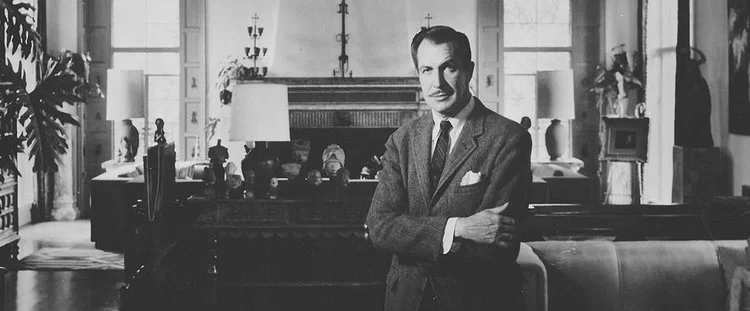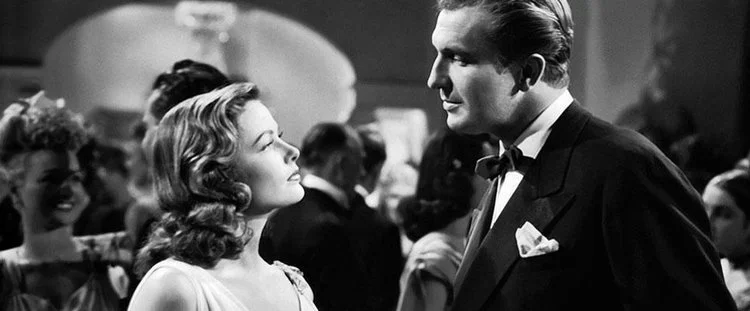Review: Some of My Best Friends are Actresses by Vincent Price
This article was originally written for Sainte Magazine.
SOMEONE HAS TO REMEMBER THAT HOLLYWOOD HAS A HISTORY... AND THEN KEEP THAT HISTORY ALIVE.
- RODDY MCDOWALL TO VICTORIA PRICE
Despite having a decades-long career in a variety of genres, Vincent Price’s name is synonymous with horror. And rightfully so. Though he appeared in major studio films, such as The Ten Commandments (1956) and several noir dramas, including my favorite, Laura (1944), it was his roles in horror classics like House on Haunted Hill (1959), House of Wax (1953), and The Bat (1959) that allowed him to become an icon in a still young, blossoming genre. Hell, my first introduction to him was by way of "Vincent Van Ghoul", a character in the cartoon series The 13 Ghosts of Scooby-Doo. Perhaps not the horror that immediately comes to mind when thinking of Vincent Price, but it still counts.
I didn’t realize it then, but that monotonous, dryly amused, nigh sinister voice that I heard on the Cartoon Network (which, in truth, both enraptured and frightened me as a child, and still does to this day), belonged to a man far more interesting than I ever could have imagined.
Price was an avid art collector, a gourmet cook, an advocate for social change, and a doting father. In 1950, following an NBC Radio episode of The Saint, Price publicly denounced racial and religious prejudice with the following speech:
“Ladies and gentleman, poison doesn’t always come in bottles, and it isn’t always marked with the skull and crossbones of ‘danger’. Poison can take the form of words and phrases and acts, the venom of racial and religious hatred. Here in the United States, perhaps more than ever before, we must learn to recognize the poison of prejudice and to discover the antidote to its dangerous effects. Evidences of racial and religious hatred in our country place a potent weapon in the hands of our enemies, providing them with the ammunition of criticism. Moreover, group hatred menaces the entire fabric of democratic life. As for the antidote, you can fight prejudice. First, by recognizing it for what it is and second, by actively accepting or rejecting people on their individual worth, and by speaking up against prejudice and for understanding. Remember, freedom and prejudice can’t exist side-by-side. If you choose freedom, fight prejudice.”
Vincent Price in his home, photo courtesy of VincentPrice.com
Price was also a strong activist for the LGBTQ community. He supported his daughter, Victoria, when she came out as a lesbian, spoke out against Anita Bryant’s anti-gay platforms in the 1970s, was an honorary member of PFLAG (“the United States’ first and largest organization uniting families and allies with people who are lesbian, gay, bisexual, transgender, or queer.”), and was among the first celebrities to appear in AIDs PSAs.
Indeed, Victoria Price revealed her father’s probable bisexuality in her 2014 book, Vincent Price: A Daughter’s Biography. "I am as close to certain as I can be that my dad had physically intimate relationships with men. I know for 100 percent fact that my dad was completely loving and supportive of LGBT people." She goes on to say, "he married a bisexual woman [actress Coral Browne] and everybody assumed their marriage was a fraud… It wasn't a fraud. It was a totally sexual relationship, but they were two people with very open-minded approaches as to what life should look like. And that to me - people who lived this truth in all aspects of their lives - they should be heroes to every community." As a bisexual woman desperate for representation, this was a dream come true.
"I am as close to certain as I can be that my dad had physically intimate relationships with men. I know for 100 percent fact that my dad was completely loving and supportive of LGBT people."
Victoria Price, in addition to her many hats (“author, inspirational speaker, designer, blogger, artist, interspiritual minister”, according to her website) has also tasked herself with ensuring that her father’s legacy is kept as honest as possible, and continually celebrated, almost three decades after his death. When she announced the publication of her new e-book, Some of My Best Friends Are Actresses, a collection of notes and essays, written by Vincent and edited and compiled by Victoria, I, a fan of Vincent Price and the oft-forgotten actresses of Old Hollywood, knew I had to read it. And I’m glad I did.
Vincent Price with his daughter, Victoria.
The notes used to compile this collection are glimpses into Vincent Price’s relationships with some of the greatest actresses of the 20th century, but they are not of the salacious variety that most often appears in publications about Hollywood. As Victoria Price notes in her introduction, most of the stories were never fleshed out into full essays.
“Just meeting or knowing an actress is not enough. To appreciate them fully, you must work with them.”
- Vincent Price on Ethel Barrymore
There are stories about twenty-one women included in this collection (Joan Crawford, Marlene Dietrich, Tallulah Bankhead, Georgia O’Keefe among them), as well as a few miscellaneous essays at the end, such as Price’s biting but thoughtful review of Hush... Hush Sweet Charlotte (1964).
Price writes in the same way he spoke -- words thoughtfully strung together in a way that could transform a sentence into a work of art. The following description of his introduction to Marion Davies, occuring just before she died, is both gorgeous and fascinatingly haunting, eerie in a way that is certainly suitable for someone as ingratiated in horror as he, while still maintaining a kind of romanticism:
“... She was quite literally standing on death’s welcoming doormat, her hand on the latch. … The symbolically setting sun leant her a rare glow that dazzled me. She was still blond [sic], and death tugging at the pall of skin stretched over the skeletal bones of her face made a breathtaking impression.”
What comes through most beautifully in the cacophony of personal stories is Price’s obvious, genuine respect for the women included and the experiences that brought them together. From his tongue-tied experience meeting Greta Garbo at a dinner party to his immeasurably valuable acting lessons from Helen Hayes; even the "chilled" relationship he had with Agnes Moorehead -- one that had apparently turned sour following a bizarre “betrayal” on her part during a tour of the play Don Juan in Hell. Although it is tinged with somewhat snarky comments and his own admittance that, “... she was one of my few let-downs in a profession not famously free of them”, his opinion of her talent and her formidable presence is clear.
Vincent Price and Gene Tierney in Laura (1944).
The glaringly disappointing thing about this collection (aside from the lack of reference to Gene Tierney -- a personal qualm -- and the fact that there simply isn’t more for my desperately fascinated curiosity), is the frequency with which Price refers to the subject’s physical appearance. Victoria Price warned of this in the introduction, noting that while her father would have been “appalled, but not shocked” by #MeToo, he “carried with him the values of his era, which is why he thought it a great compliment to publicly praise a woman for her physical beauty, and even her sex appeal. Particularly if she was, as he understood it, in the business of being a world-famous sex symbol.” And although I was warned of it, (and, being a fan of Old Hollywood and a human being who has experienced men, somewhat expected it) it still left me with a heavy heart on my first readthrough.
But it also drew into focus the fact that we are truly products of our time, as much as we may hate to admit it. This is not an excuse, of course, but an acknowledgment that there are some ideals that we will always be blinded to that will cause future generations to look back and say “how could they have thought like that?”. The conversations around how women are viewed in the eyes of the public and the media are only now starting to shift. I still catch myself criticizing or praising someone’s appearance on occasion. So, after swallowing my own harsh reaction to the situation, I realized this: Vincent Price’s comments about women’s physical traits do not negate his work with LGBTQ groups or his views on racism; they do not make him a bad guy; they do not void his other thoughtful, funny, unique memories of his co-stars, heroines, and friends.
Vincent Price in House on Haunted Hill (1959).
Vincent Price left a legacy of respect for artists. He wrote these memories down to keep the people he admired alive. As Victoria states in her introduction, “... Some of the women in these essays remain household names. Others have been forgotten. But to my father, they were an essential and vital part of not only his own life tapestry, but also of the history of an industry that changed the world -- the entertainment industry.” He understood the fleeting and heartbreaking nature of Hollywood and the collective short-term memory of human beings in general, and has offered us his personal experiences, so that we can glimpse at a Hollywood that no longer exists, through the eyes of a man who saw it all.
Some of My Best Friends are Actresses is available for purchase on www.vincentprice.com



